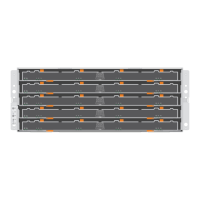Chapter 1: Cabling Concepts and Best Practices 25
Common
Procedures
This section provides procedures that are common to most cable installations.
Handling
Static-Sensitive
Components
Static electricity can damage dual inline memory modules (DIMMs), system boards,
and other static-sensitive components. To prevent damaging the system, follow these
precautions:
Move and store all components in the static-protective packaging in which they
came.
Place components on a grounded surface before removing them from their
static-protective packaging. Grounded surfaces include static-dissipating mats or
grounded workstations.
Always be properly grounded when touching a static-sensitive component. To
properly ground yourself, wear a wrist strap or boot strap made for this purpose.
Handle the component by its edges. Do not touch solder joints, pins, or printed
circuitry.
Use conductive field service tools.
Installing an SFP
Transceiver and a
Fiber-Optic Cable
You must install SFP transceivers into each connector to which you will connect a
fiber-optic cable.
ATTENTION Potential degraded performance – To prevent degraded
performance, do not twist, fold, pinch, or step on the fiber-optic cables. Many cables
have a minimum bending radius. For example, do not bend fiber-optic Fibre Channel
cables tighter than a 5-cm (2-in.) radius. Check the specifications for your cables and
do not bend any cable more tightly than the minimum specified radius.
ATTENTION Possible hardware damage – To prevent electrostatic discharge
damage to the tray, use proper antistatic protection when handling tray components.

